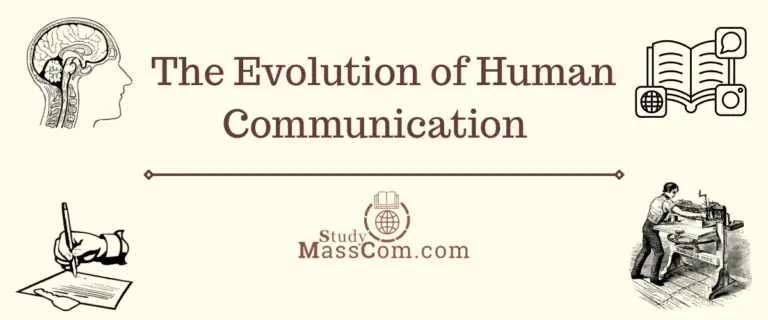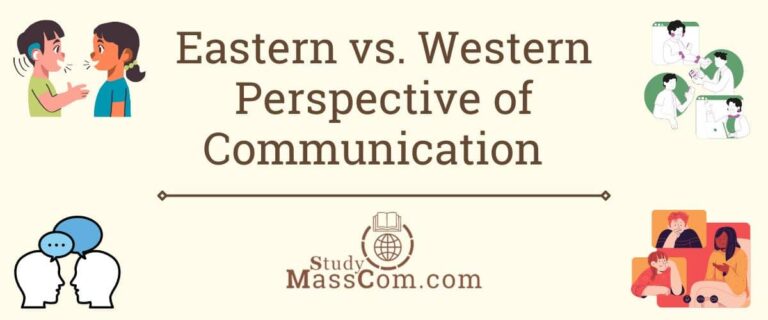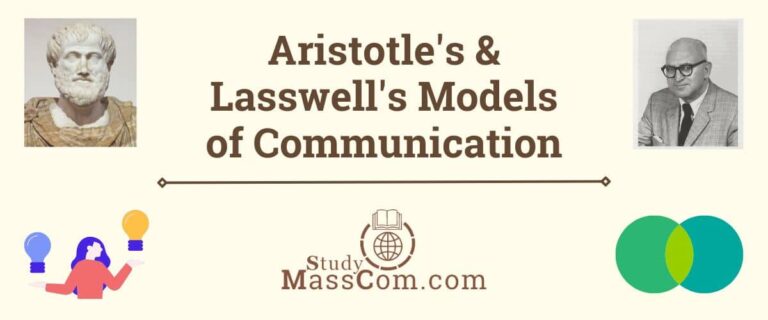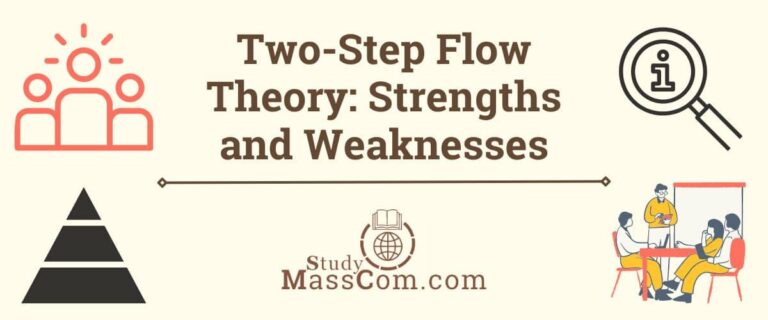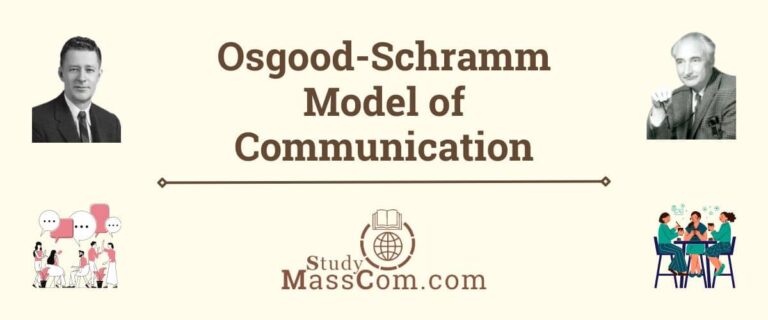Gerbner’s Model of Communication: Advantages & Disadvantages
In the realm of communication theory, George Gerbner’s model stands out as a comprehensive framework that examines the role of media in shaping our perceptions, attitudes, and behaviors. Gerbner’s Cultural Indicators Approach delves deep into the effects of media messages on individuals and society, emphasizing the importance of understanding the cultural context in which communication occurs. This article explores Gerbner’s model in detail, highlighting its key components, implications, and criticisms.

The Cultural Indicators Approach in Gerbner’s Model of Communication
George Gerbner, a prominent communication scholar, introduced the Cultural Indicators Approach in the 1960s as a response to the limited scope of existing communication theories. He sought to develop a model that goes beyond simplistic notions of media influence and explores the complex interplay between media content, audience reception, and cultural factors.
At the heart of Gerbner’s model is the concept of cultivation theory, which posits that exposure to media content gradually shapes individuals’ perceptions of reality. According to Gerbner, the media act as storytellers, constructing narratives that reflect and reinforce dominant cultural values, beliefs, and ideologies. Through repeated exposure to these narratives, viewers internalize certain assumptions about the world, leading to a phenomenon known as “mean world syndrome,” wherein individuals perceive the world as more dangerous and violent than it actually is.
Read about Eugene White’s Model of Communication.
Key Components of Gerbner’s Model of Communication
Here are the key components of George Gerbner’s model of communication that include but are not limited to:
Media Content Analysis
Gerbner and his colleagues conducted extensive content analyses of television programs, focusing on recurring themes, character portrayals, and prevalent messages. They identified patterns of representation that reflected underlying cultural norms and ideologies.
Learn about the advantages and disadvantages of New Media.
Message Systems Analysis
This component of the model examines the structure and organization of media industries, including ownership patterns, regulatory frameworks, and economic interests. Gerbner argued that these structural factors influence the production and dissemination of media content, shaping its cultural impact.
Cultivation Analysis
At the core of Gerbner’s model is cultivation analysis, which explores the long-term effects of media exposure on individuals’ perceptions and attitudes. By comparing heavy and light media consumers, researchers can assess the extent to which media messages influence viewers’ beliefs about social reality.
Explore Schramm’s Model of Communication in detail.
Implications of Gerbner’s Model of Communication
Gerbner’s Cultural Indicators Approach has several significant implications for our understanding of media effects and communication processes:
Media Influence on Perceptions
Gerbner’s model highlights the power of media in shaping individuals’ perceptions of social reality. By portraying certain groups, behaviors, and situations in specific ways, the media contribute to the construction of shared meanings and interpretations.
Check out the Media Dependency Theory and its strengths and weaknesses.
Cultural Hegemony
The model underscores the role of media in perpetuating dominant cultural ideologies and values. By controlling the production and distribution of media content, powerful institutions can shape public discourse and maintain their hegemonic position.
Socialization and Identity Formation
Gerbner’s model emphasizes the role of media in socializing individuals and shaping their identities. Through exposure to media narratives, viewers internalize cultural norms, stereotypes, and role expectations that influence their self-concept and worldview.
Policy Implications
The Cultural Indicators Approach has implications for media policy and regulation. By highlighting the structural factors that influence media content, policymakers can address issues of diversity, representation, and media ownership to promote a more inclusive and democratic media environment.
Read more about the Shannon-Weaver Model of Communication.
Advantages of Gerbner’s Model of Communication
Gerbner’s Model of Communication, particularly his Cultural Indicators Approach, offers several advantages that contribute to our understanding of the complex relationship between media, culture, and society. These advantages include:
Comprehensive Framework
Gerbner’s model provides a comprehensive framework for studying media effects by incorporating multiple dimensions of analysis, including media content, message systems, and cultivation effects. This holistic approach allows researchers to examine the interplay between structural factors, media messages, and audience perceptions.
Cultural Context
Unlike some earlier communication models that focus solely on individual-level effects, Gerbner’s model emphasizes the cultural context in which communication occurs. By examining media content within its cultural context, researchers can better understand how media messages reflect and reinforce dominant cultural norms, values, and ideologies.
Longitudinal Perspective
Gerbner’s Cultural Indicators Approach emphasizes longitudinal research designs, which involve studying media effects over an extended period. This longitudinal perspective allows researchers to assess the cumulative impact of media exposure on individuals’ perceptions and attitudes, providing valuable insights into the long-term effects of media consumption.
Empirical Evidence
Gerbner and his colleagues conducted extensive empirical research to support their model, including content analyses of television programming and longitudinal studies of media effects. This empirical evidence strengthens the validity and reliability of Gerbner’s findings, enhancing the credibility of his model within the field of communication research.
Policy Implications
Gerbner’s model has important implications for media policy and regulation. By highlighting the structural factors that influence media content, such as ownership patterns and regulatory frameworks, Gerbner’s model informs discussions about media diversity, representation, and democracy. This focus on policy implications underscores the practical relevance of Gerbner’s model for addressing social issues related to media and culture.
Cultivation Theory
One of the key components of Gerbner’s model is cultivation theory, which posits that media exposure gradually shapes individuals’ perceptions of social reality. This theoretical framework has been influential in explaining how media messages contribute to the construction of shared meanings and interpretations within society. Cultivation theory offers a nuanced understanding of the cumulative effects of media exposure, highlighting the role of media in shaping individuals’ perceptions of the world.
Overall, Gerbner’s Model of Communication, particularly his Cultural Indicators Approach, offers several advantages for understanding the complex relationship between media, culture, and society. By providing a comprehensive framework that incorporates cultural context, longitudinal research designs, empirical evidence, and policy implications, Gerbner’s model contributes valuable insights to the field of communication research.
Learn more about the differences between Cultivation Theory and Agenda-Setting Theory.
Disadvantages of Gerbner’s Model of Communication
While George Gerbner’s Cultural Indicators Approach has made significant contributions to communication theory, it also has several disadvantages and criticisms:
Oversimplification
Critics argue that Gerbner’s model oversimplifies the complex relationship between media and society by emphasizing the passive effects of media exposure. It may overlook the active role that individuals play in interpreting and negotiating media messages, as well as the influence of personal experiences and social interactions on perceptions and attitudes.
Lack of Causality
Some scholars question the causal relationship between media exposure and cultivation effects proposed by Gerbner’s model. While cultivation theory suggests that prolonged exposure to media content can shape individuals’ perceptions of reality, it does not establish a direct cause-and-effect relationship. Other factors, such as individual differences and social context, may also contribute to cultivation effects, making it challenging to isolate the specific impact of media exposure.
Limited Scope
Gerbner’s focus on television as the primary medium of analysis has been criticized for neglecting other forms of media, such as digital platforms and social media, which have become increasingly influential in contemporary society. This limited scope may overlook important changes in media consumption patterns and their effects on individuals’ perceptions and behaviors.
Homogenization of Audiences
Critics argue that Gerbner’s model tends to homogenize audiences by categorizing viewers as either heavy or light media consumers based on quantitative measures of exposure. This approach overlooks the diversity of audience interpretations and responses to media messages, as well as the role of individual differences in shaping cultivation effects. It may also ignore the active engagement of audiences in selecting and interpreting media content according to their preferences and interests.
Cultural Bias
Some scholars have criticized Gerbner’s model for its cultural bias, particularly its focus on mainstream media content and its portrayal of dominant cultural values and ideologies. This bias may overlook the perspectives and experiences of marginalized groups, as well as alternative media representations that challenge dominant narratives. Critics argue that a more inclusive approach to studying media effects should consider a broader range of voices and perspectives within society.
Methodological Challenges
Gerbner’s model relies heavily on content analysis and survey research methods to study media effects, which may have methodological limitations. Content analysis may overlook the contextual meaning and interpretation of media messages, while survey research may rely on self-reported data that are subject to response biases. Additionally, longitudinal studies to assess cultivation effects over time may face challenges in controlling for confounding variables and establishing causality.
Overall, while Gerbner’s Cultural Indicators Approach has contributed valuable insights to our understanding of media effects, it also has several disadvantages and limitations that warrant critical examination and further refinement in communication research.
Explore the advantages and disadvantages of Berlo’s SMCR model of communication.
Examples of Gerbner’s Model of Communication
Gerbner’s Cultural Indicators Approach has been applied in various contexts to analyze media content, examine cultivation effects, and explore the cultural dimensions of communication. Here are some examples of studies and applications of Gerbner’s model:
Television Violence and Cultivation Effects
One of the most well-known applications of Gerbner’s model is in the study of television violence and its effects on viewers. Gerbner and his colleagues conducted extensive content analyses of television programming to identify recurring themes of violence and aggression. They found that heavy viewers of television, particularly crime and drama programs, tend to overestimate the prevalence of violence in society and develop a “mean world syndrome,” wherein they perceive the world as more dangerous and violent than it is. This research has implications for understanding the impact of media violence on viewers’ perceptions and attitudes toward crime, law enforcement, and social order.
Representation of Gender and Race in Media
Gerbner’s model has also been applied to analyze the representation of gender and race in media content. Researchers have used content analysis techniques to examine the portrayal of gender roles, stereotypes, and racial stereotypes in television programs, films, and advertising. These studies have revealed patterns of underrepresentation, misrepresentation, and stereotyping of women and racial minorities in mainstream media, highlighting the influence of media messages on shaping societal norms and attitudes toward gender and race.
Political Communication and Media Bias
Gerbner’s model has been applied to analyze political communication and media bias in news coverage. Researchers have examined the framing of political issues, the selection of sources and experts, and the representation of political candidates in news media. These studies have revealed biases in media coverage that reflect underlying political ideologies, economic interests, and power dynamics. By applying Gerbner’s model to political communication, researchers can uncover the ways in which media messages shape public perceptions, political attitudes, and voter behavior.
Cross-Cultural Studies of Media Effects
Gerbner’s model has been applied in cross-cultural studies to compare media effects across different cultural contexts. Researchers have conducted comparative analyses of television programming and audience perceptions in various countries to examine the cultural specificity of media messages and cultivation effects. These studies have revealed differences in media content, audience interpretations, and cultivation effects across cultures, highlighting the importance of considering cultural context in understanding media effects.
Media Policy and Regulation
Gerbner’s model has implications for media policy and regulation, particularly in addressing issues of media diversity, representation, and democracy. Researchers and policymakers have used Gerbner’s model to advocate for policies that promote media pluralism, encourage diversity in media ownership and content, and protect against the concentration of media power. By applying Gerbner’s model to media policy debates, researchers can inform discussions about the social and cultural implications of media regulation.
Overall, these examples demonstrate the versatility and applicability of Gerbner’s Cultural Indicators Approach in analyzing media content, understanding cultivation effects, and exploring the cultural dimensions of communication in various contexts.
Read about Lasswell’s Model of communication and its pros and cons.
Conclusion
George Gerbner’s Cultural Indicators Approach remains a foundational model in the field of communication theory, offering valuable insights into the complex interplay between media, culture, and society. By emphasizing the role of media content, structural factors, and cultivation effects, Gerbner’s model provides a comprehensive framework for understanding the cultural dimensions of communication. Despite its criticisms, Gerbner’s model continues to shape scholarly debates and inform our understanding of media effects in the digital age.
Check out some important Mass Communication Theories and Models.
FAQs
Gerbner’s model of communication, known as the Cultural Indicators Approach, emphasizes the role of media in shaping individuals’ perceptions of social reality. It comprises three key components: media content analysis, message systems analysis, and cultivation analysis. The model posits that repeated exposure to media messages influences viewers’ perceptions and attitudes, leading to the cultivation of shared meanings and interpretations. Gerbner’s model highlights the cultural context in which communication occurs and the cumulative effects of media exposure on individuals’ perceptions of the world, contributing to our understanding of the complex relationship between media, culture, and society.
Gerbner’s model of communication, also known as the Cultural Indicators Approach, was developed and published in the 1960s. Initially introduced in academic papers and later expounded upon in various scholarly works, including Gerbner’s influential book “Communication and Social Power” published in 1973, the model gained widespread recognition within the field of communication theory. Through empirical research and theoretical development, Gerbner and his colleagues refined the model over several decades, establishing it as a foundational framework for understanding the cultural dimensions of communication and media effects.

